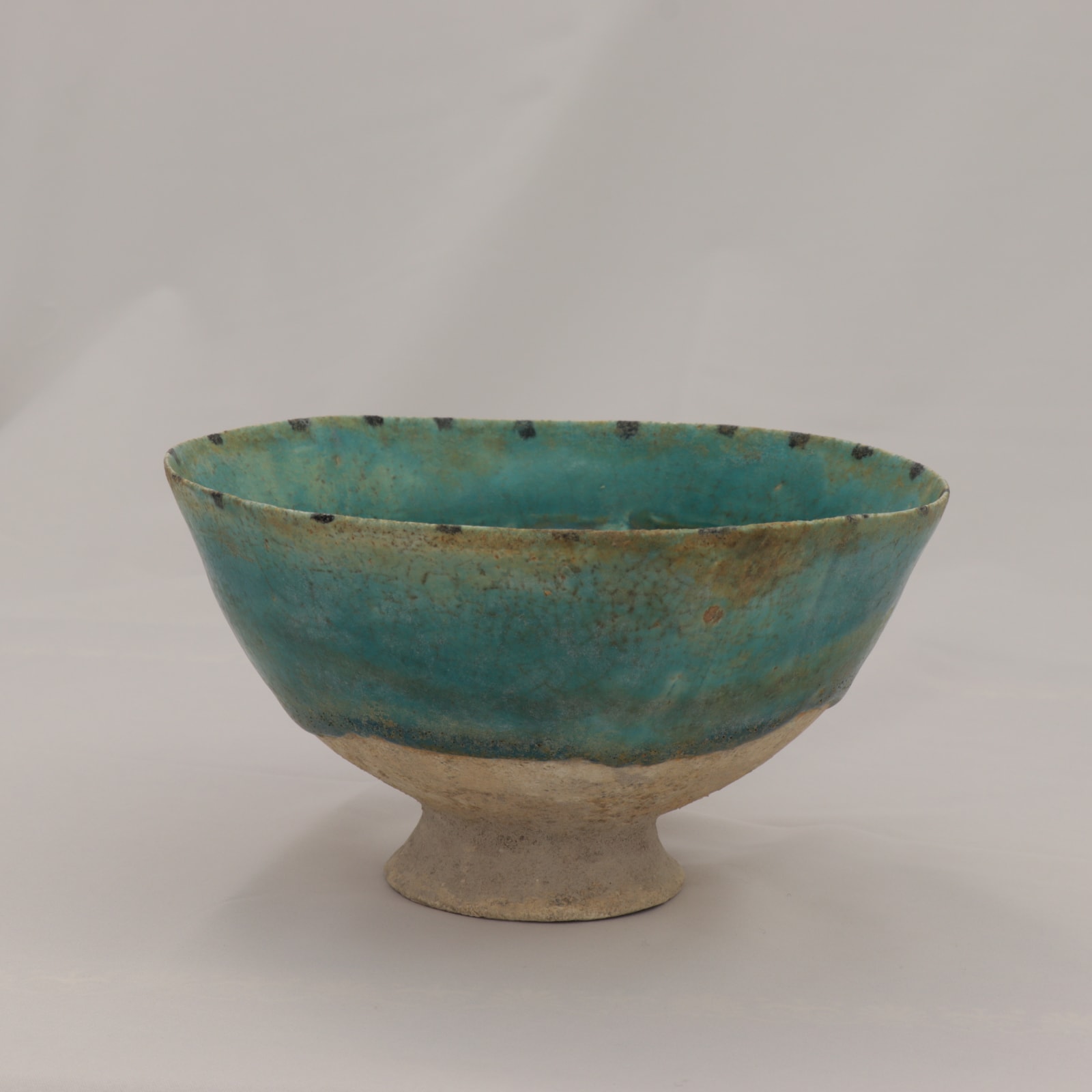Kushan Turquoise-Blue Glazed Bowl, with Tigers, Twelfth to Thirteenth Century AD
Stonepaste, Pigment
11 x 19 cm
4 3/8 x 7 1/2 in
4 3/8 x 7 1/2 in
CB.3126
Description Of conical form on short straight foot, the cavetto moulded with two tigers, the present bowl is a rare and superb example of a Kashan turquoise blue glazed bowl...
Description
Of conical form on short straight foot, the cavetto moulded with two tigers, the present bowl is a rare and superb example of a Kashan turquoise blue glazed bowl of the 12th-13th century. The tiger depicted here is most likely the Caspian tiger, a Panthera tigris tigris population native to eastern Turkey, northern Iran, Mesopotamia, the Caucasus around the Caspian Sea, and likely a symbol of strength.
In the 12th century new techniques of decoration on ceramics were introduced, following the development of a clearer, thinner and lighter type of ceramic body- a real technological revolution- the so-called stonepaste or fritware, of which the present piece is a stunning example. This fine and light-colored ceramic body was made of ground silica with additions of glass frit and clay. After creating the ceramic body, the Islamic potter started to add colour, in the present case copper for turquoise. In a lead glaze copper turns green, but in the alkaline glazes it turns turquoise, and it is this colour which has been the signature mark of Persian ceramics and tiled domes ever since its introduction in the eleventh – twelfth century.
These types of fines were mainly manufactured in Kashan, which became one of the main centres for high quality ceramics. It appears to have been a major site for the manufacture of fine wares between the 1170s and 1220s, as well as in the later 13th and early 14th centuries. The town was well situated for the development of this industry, being located near sources of some of the materials necessary for manufacturing stonepaste.
Of conical form on short straight foot, the cavetto moulded with two tigers, the present bowl is a rare and superb example of a Kashan turquoise blue glazed bowl of the 12th-13th century. The tiger depicted here is most likely the Caspian tiger, a Panthera tigris tigris population native to eastern Turkey, northern Iran, Mesopotamia, the Caucasus around the Caspian Sea, and likely a symbol of strength.
In the 12th century new techniques of decoration on ceramics were introduced, following the development of a clearer, thinner and lighter type of ceramic body- a real technological revolution- the so-called stonepaste or fritware, of which the present piece is a stunning example. This fine and light-colored ceramic body was made of ground silica with additions of glass frit and clay. After creating the ceramic body, the Islamic potter started to add colour, in the present case copper for turquoise. In a lead glaze copper turns green, but in the alkaline glazes it turns turquoise, and it is this colour which has been the signature mark of Persian ceramics and tiled domes ever since its introduction in the eleventh – twelfth century.
These types of fines were mainly manufactured in Kashan, which became one of the main centres for high quality ceramics. It appears to have been a major site for the manufacture of fine wares between the 1170s and 1220s, as well as in the later 13th and early 14th centuries. The town was well situated for the development of this industry, being located near sources of some of the materials necessary for manufacturing stonepaste.
